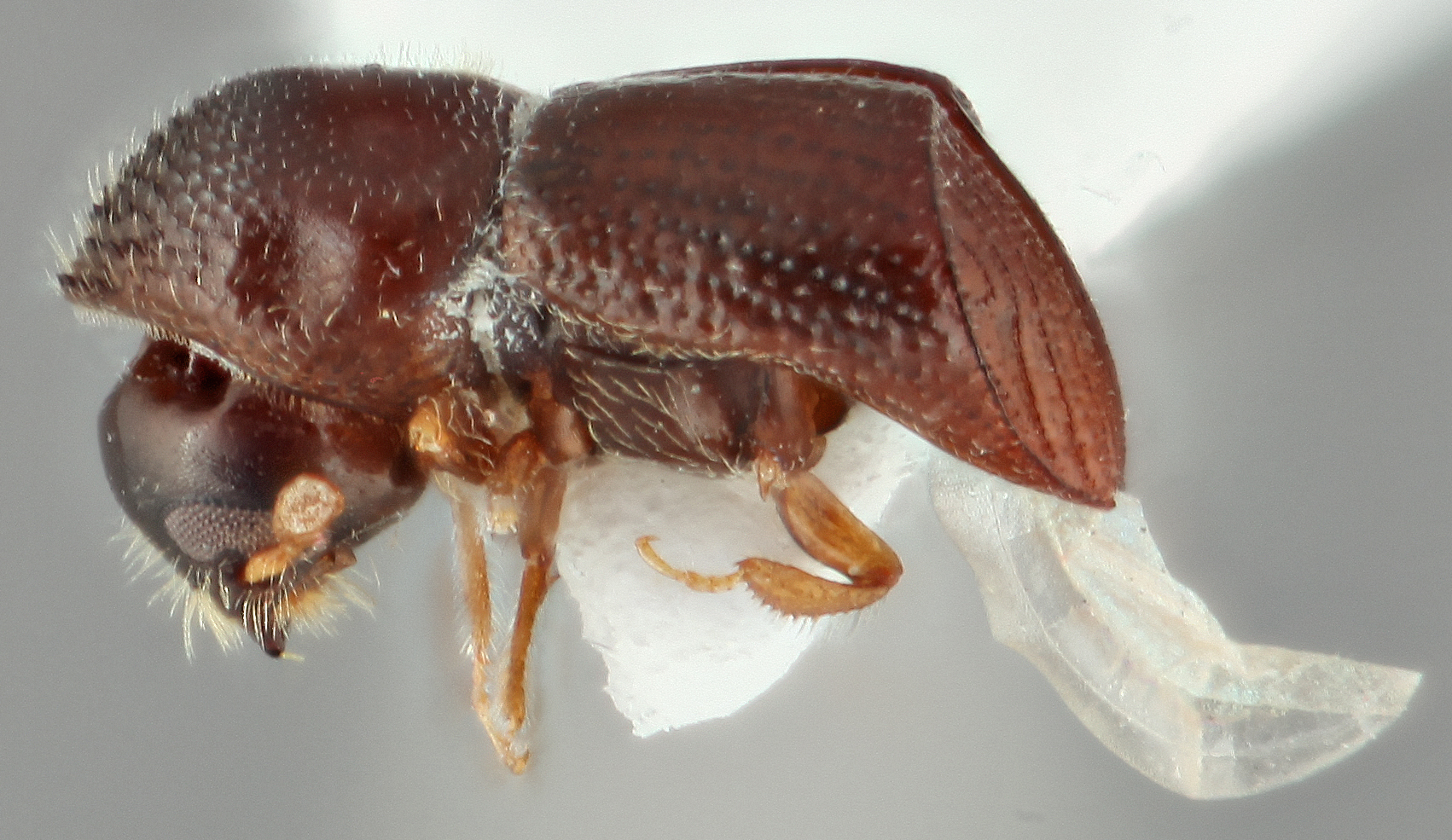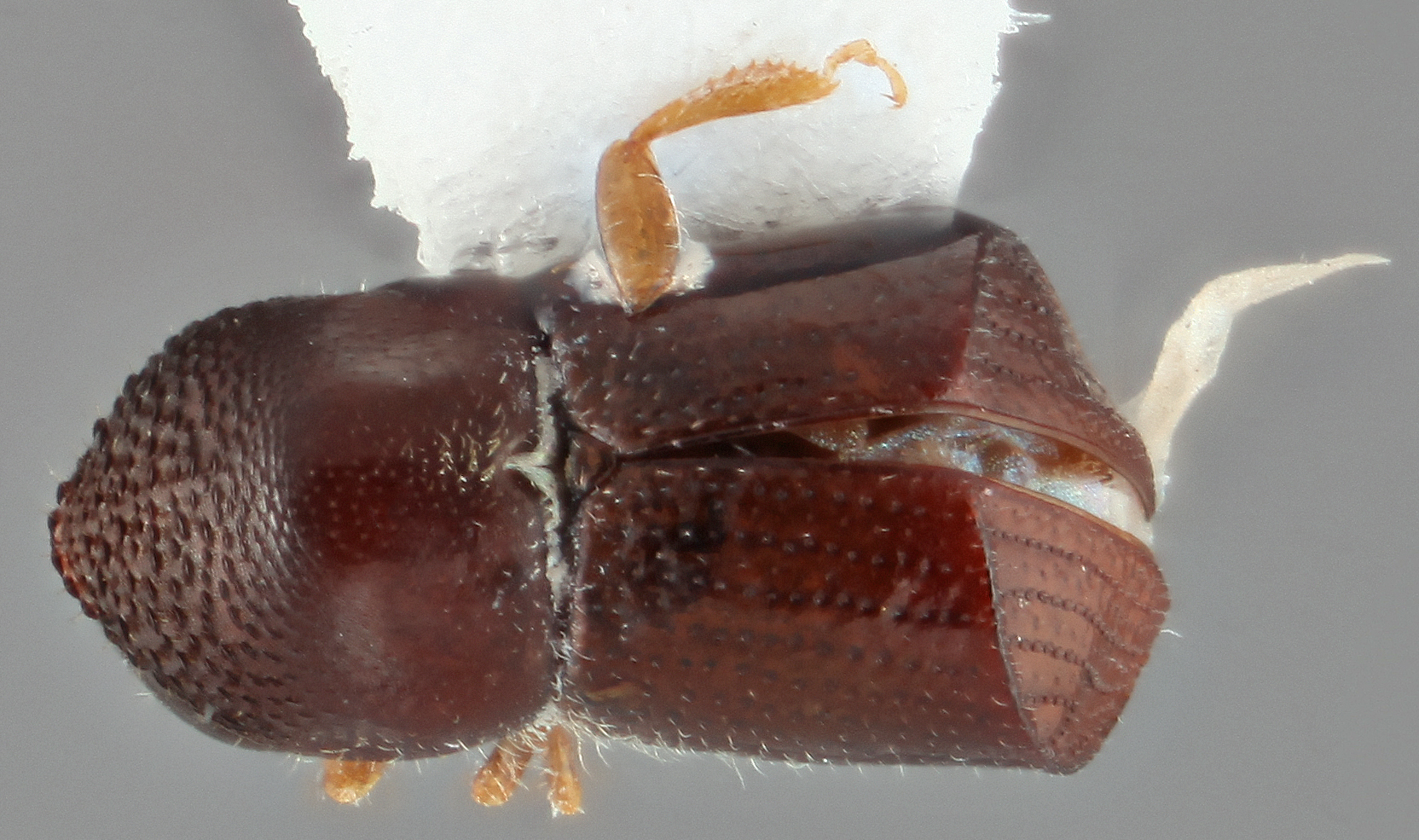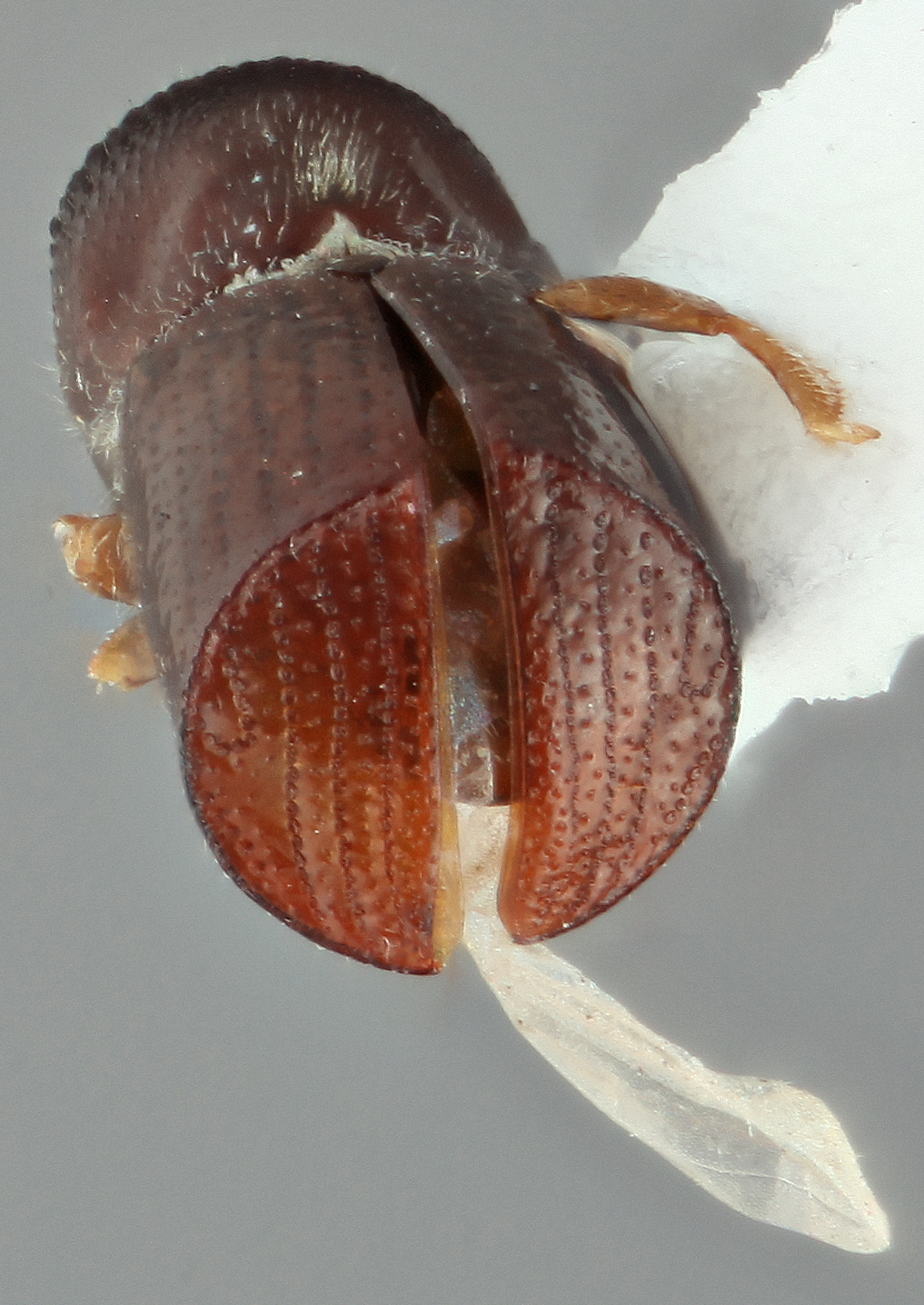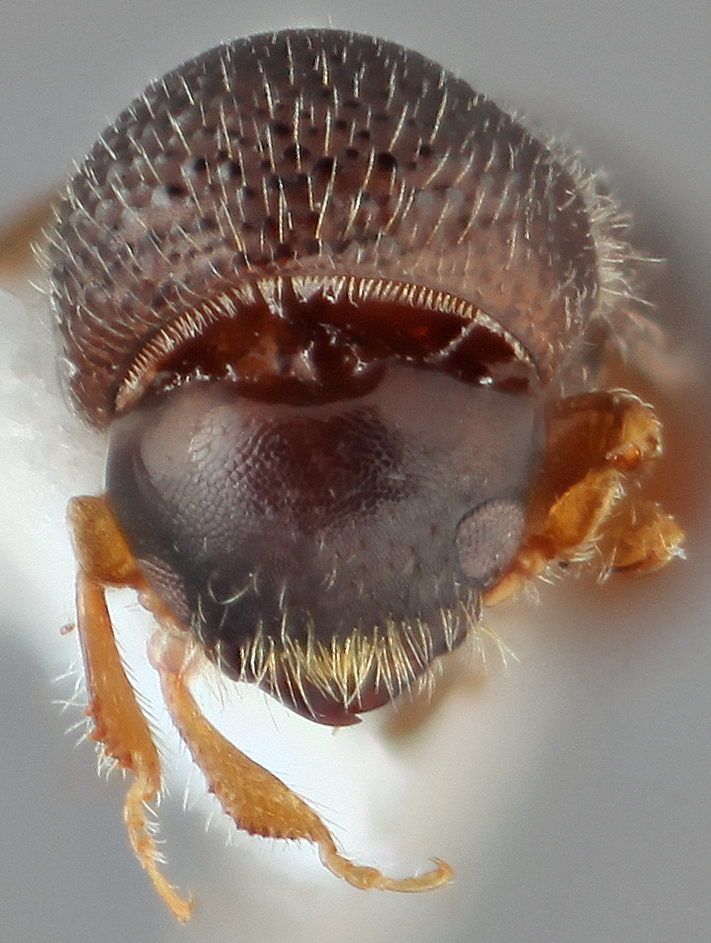Xylosandrus trunculus
|
Xylosandrus trunculus paratype lateral; S.M. Smith |
|
Xylosandrus trunculus paratype dorsal; S.M. Smith |
|
Xylosandrus trunculus paratype declivity; S.M. Smith |
|
Xylosandrus trunculus paratype frontal; S.M. Smith |
Taxonomic history
Xylosandrus trunculus Park & Smith 2020 (in Park et al. 2020Park et al. 2020:
Park S, Smith SM, Cognato AI, Beaver RA. 2020. Catalogue of Korean Xyleborine ambrosia beetles (Coleoptera: Curculionidae) with seven new species. Journal of Asia-Pacific Biodiversity 13: 210-228. https://doi.org/10.1016/j.japb.2020.01.002): 225.
Diagnosis
1.38−1.48 mm (mean = 1.43 mm; n = 2); 2.18 times as long as wide. This species can be distinguished by its small size; elytral declivitydeclivity:
downward slope of either the pronotum or elytra
 clearly truncatetruncate:
clearly truncatetruncate:
appearing cut off or suddenly shortened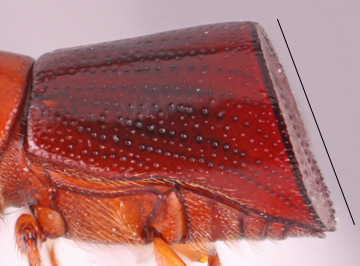 , appearing cut off; declivitaldeclivital:
, appearing cut off; declivitaldeclivital:
pertaining to the elytral declivity
striae closely granulategranulate:
'pertaining to a coarse, grainy surface texture'
 ; declivitaldeclivital:
; declivitaldeclivital:
pertaining to the elytral declivity
interstriae loosely granulategranulate:
'pertaining to a coarse, grainy surface texture'
 , uniseriate with minute erecterect:
, uniseriate with minute erecterect:
'pertaining to setae that have their apices directed away from the body and appear straight
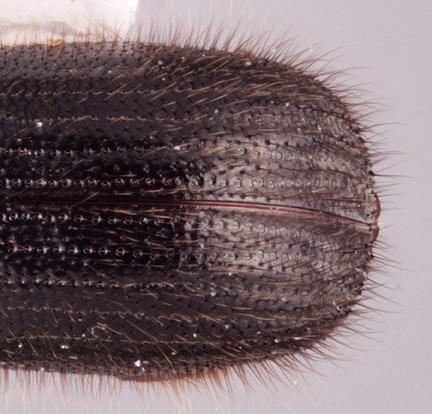 setae; pronotumpronotum:
setae; pronotumpronotum:
'the dorsal surface of the thorax
as long as wide; pronotalpronotal:
'pertaining to the pronotum
basebase:
point or edge closest to the body; opposite of apex medially triangularly emarginateemarginate:
medially triangularly emarginateemarginate:
notched at the margin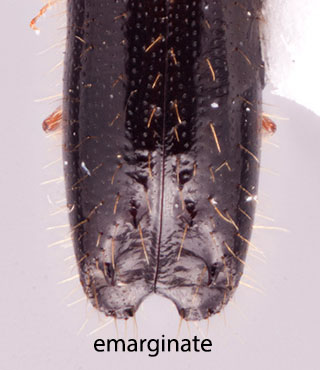 for the mycangial tuftmycangial tuft:
for the mycangial tuftmycangial tuft:
'tuft of setae that denotes the mycangia exterior opening
 , tuft with sparse somewhat long scale-like setaeseta:
, tuft with sparse somewhat long scale-like setaeseta:
small hair-like or scale-like structure
.
May be confused with
Amasa spp., Xylosandrus amputatus, X. bellinsulanus, and X. mancus
Distribution
South Korea
Host plants
unknown
DNA data
specimens not available for sequencing

